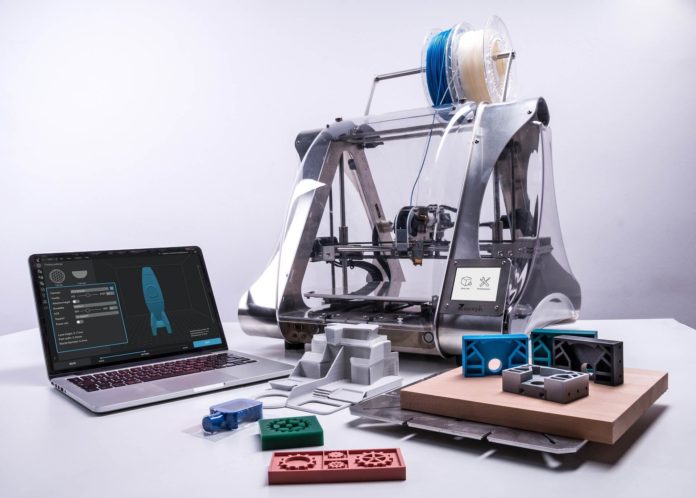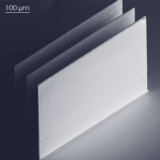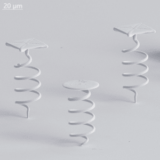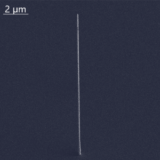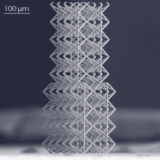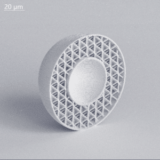Additive micromanufacturing (μAM) is a newly developed technology, quite different from mainstream AM.
Minute metal objects (1 μm to 1000 μm) are manufactured with this revolutionary 3D printing process. The newly founded company Exaddon AG, the former 3D printing business unit of Cytosurge AG, is considered as a world leader in this new field. Exaddon develops processes and systems for additive micromanufacturing and builds customized solutions for the global marketplace.
It is a mind-boggling thought: Michelangelo’s entire David statue has been printed on the equivalent of a cross-section of a human hair. In pure metal! To accomplish this astounding result, the µAM technology uses an extremely small printing nozzle with an opening size of only a few hundred nanometres. The tiny nozzle, in combination with the well-known process of electroplating, achieves something that is called “locally confined electrochemical deposition”.
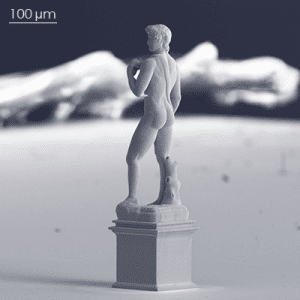
It is all available in the first µAM system that Exaddon has built: CERES. CERES is a complete and stand-alone system that is available for research, prototype and low-volume production purposes.
The 3D printing process itself is much like building a structure with small toy bricks used by children. Bricks are laid one after the other. In µAM, these “bricks” are called voxels. The nozzle deposits one voxel and then moves on to deposit the next. Voxels can be stacked on top of each other, but can also be stacked horizontally, like horizontal bridges, but without any support structure.
Just as with the children’s toys, once the bricks are laid, the object is finished. There are no post-processing steps and it is all done at room temperature. That means that an object can be printed on temperature-sensitive components and that it is immediately fully functional. This is a huge advantage, especially for its use in the semiconductor industry. It is now possible to customize a metal layer or repair an existing chip within a single process step.
Unlike putting toy bricks on top of each other, the voxels of the µAM technology produce a dense body that can no longer be separated after it was produced. The voxels seamlessly merge together, and the inner structure of the material does not reveal any of the brick-laying process anymore. This surprising feature results in very pure and high-quality metals, which is reflected in its excellent electrical and mechanical properties.
Newly founded Exaddon is completely focused on the technology of additive micromanufacturing (μAM). Exaddon assumes the research and development results, as well as the AM customers of Cytosurge. Cytosurge has acted as an incubator for the business unit over the past two and a half years and will remain to be an important partner.
The key reasons for the spin-off are found in the tremendous market feedback, the very different target market, the growth potential and the ability to independently work on solutions for customers anywhere in the marketplace. As a side benefit, the framework for potential future investment has now become even more focused and stable.
As a technology leader, Exaddon continuous to work closely with research institutions and high-tech companies on innovative products and technology solutions.
























